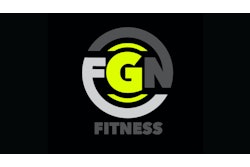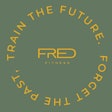Mix up your typical mind/body programming with ancient traditions from China.
When people think of mind/body exercise, their thoughts usually turn to yoga and Pilates. Still, many Americans are intimidated by the seemingly extreme movements and stretches that must be held for long periods of time. They may feel they're too old to be folding themselves into pretzel shapes or balancing on one foot and chanting. They may feel they are too out of shape to tackle anything called "the hundred" - especially when that's just the warm up! But other, less intimidating traditions exist that can round out your fitness center's mind/body schedule, and give your members the variety they crave. Many forms of exercise with their roots in Chinese culture have both physical and mental components, including tai chi and qi gong.
Tai chi
"It's practically impossible for people in modern America not to have been exposed to tai chi, though they may not know what they're looking at," says Bruce Frantzis, tai chi master and author of the book Tai Chi: Health for Life. "Scenes of people moving their bodies in slow motion - usually outside in a park somewhere - are all over TV and other media." So if you choose to include tai chi in your fitness center's mind/body programming, at least people will be familiar with it. But what is tai chi, really? Tai chi is a 3,000-year-old Chinese martial art. Over time, tai chi developed more peaceful branches designed not to kill an attacker, but to instill life and health in one's own body. Firmly rooted in traditional Chinese medicine (TCM), tai chi offers a wide variety of health benefits, including joint stability, balance and coordination, improved mental focus, increased energy and stress release. "Unlike cardio and strength training, this form of exercise benefits all the organs - not just the heart, lungs or certain muscle groups," Frantzis says. A typical class is spent learning and implementing a string of slow-motion martial arts moves like blocks, strikes and kicks. Short forms can be learned in a couple of months, but longer forms can take up to a year or more to complete. While going through the routine, people deliberately put their awareness into their body and emotions, and eventually learn to physically relax at will. The whole idea is to tune the mind into the body's wavelength, so the inside and outside are in harmony with each other. "Anyone in almost any condition can do tai chi - young or old, healthy or sick, intelligent or not so," says Frantzis. He often teaches older adults and clients in wheelchairs. This makes it an ideal program to add to any fitness center with a large older adult clientele. Tai chi can be done anywhere, as long as there is ample room to stretch out the arms and move around a bit. So, any decent-sized yoga room or even an outdoor courtyard will do. There is no music or special equipment involved, so it's an easy and inexpensive program to implement - all you need is a teacher. Finding the right instructor to teach tai chi may take some work. "This is not a discipline you can learn in a quickie course and then start teaching at your club," Frantzis says. "It takes a good 10 years of regular practice to be qualified to teach others competently. There are 'follow me' teachers, who are on a lower level, and there are 'hands-on' teachers who can change a student's whole experience with a slight adjustment." You can find a long list of qualified instructors on Frantzis' website at www.energyarts.com. Frantzis recommends looking for the following in a tai chi instructor:- They should be relaxed as they move; their muscles should be soft.
- Their movements should be coordinated.
- They should communicate well, and simply. Lots of philosophical jargon usually means they don't really understand what they're talking about.
- They should be able to show you credentials, or at least trace their training back to a prominent teacher - lineage is important.




































